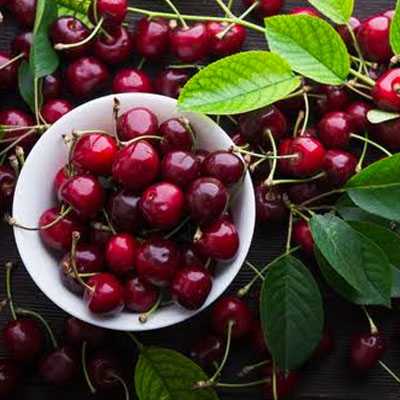The Allure of Roasted Red Pepper Hummus
The roasted red pepper hummus recipe has been gaining immense popularity over the past few years. Its vibrant color paired with its creamy, tangy flavor makes it a hit at any gathering. Originating from the Middle East, hummus has been a staple in the region's cuisine for centuries. The basic recipe for hummus is quite simple, involving chickpeas, tahini, lemon, and garlic. However, as it has made its journey westwards, many variations have emerged. One such delightful twist is the addition of roasted red peppers, which not only gives the hummus its beautiful hue but also an added depth of flavor.
For those who have dietary restrictions or simply don't have tahini on hand, there's good news. Roasted red pepper hummus without tahini is equally delicious. The roasted peppers impart such a rich taste that the absence of tahini goes nearly unnoticed. Many home chefs have also opted for other alternatives, such as olive oil, sesame oil, or even Greek yogurt, to achieve the desired creaminess in their hummus.
If you've been purchasing your hummus from a store, you're in for a treat with homemade roasted red pepper hummus. Making it at home allows you to control the ingredients, ensuring there are no added preservatives or artificial flavors. Moreover, the process of roasting the peppers and blending the ingredients provides a therapeutic culinary experience, culminating in a fresh, delectable spread that's bound to impress family and friends. So, the next time you're looking for a healthy and delicious snack, remember this easy-to-make, flavorful, and vibrant hummus.
Is Red Pepper Hummus Healthy For You?
Yes, red pepper hummus is generally healthy for you, especially when consumed as part of a balanced diet. Here are some reasons why:
Nutrient-Dense Ingredients: Hummus is primarily made from chickpeas, which are a great source of protein, dietary fiber, and essential nutrients like folate, iron, and phosphorus. When you add roasted red peppers to the mix, you also get the benefits of vitamins A, C, and B6, as well as antioxidants.
Heart Health: The primary fat in hummus comes from tahini (sesame seed paste) and olive oil, both of which contain heart-healthy unsaturated fats. These fats can help reduce the risk of cardiovascular diseases and improve cholesterol levels.
Dietary Fiber: Chickpeas, the main ingredient in hummus, are high in fiber. Dietary fiber can aid in digestion, help regulate blood sugar levels, and may reduce the risk of developing certain chronic diseases.
Low in Saturated Fat: Unlike many other spreads or dips, hummus typically has a low content of saturated fats, which can be beneficial for overall heart health.
Antioxidant Properties: Roasted red peppers are rich in antioxidants, particularly beta-carotene and capsanthin. These antioxidants can help counteract the damaging effects of free radicals in the body, which can contribute to chronic diseases and aging.
Weight Management: The protein and fiber content in hummus can promote feelings of fullness, potentially leading to reduced overall calorie intake and assisting in weight management.
Low Glycemic Index: Foods with a low glycemic index, like chickpeas, can be beneficial for blood sugar control, making hummus a good option for individuals with or at risk for diabetes.
However, while red pepper hummus has many health benefits, it's essential to consume it in moderation. Store-bought versions can sometimes contain added sugars, preservatives, and higher levels of sodium. It's always a good idea to read the nutrition label or, better yet, make your own at home to control the ingredients and their quantities.
What To Serve with Roasted Red Pepper Hummus?
Roasted Red Pepper Hummus is a versatile dip that pairs well with a variety of dishes, especially Middle Eastern foods.
Here are some delicious recipes that you can serve with Roasted Red Pepper Hummus:
- Pita Bread: Pita bread is a classic and traditional choice. You can toast them for added crunch.
- Fresh Vegetables: Serve hummus as a dip with an assortment of fresh vegetables like carrot sticks, cucumber slices, bell pepper strips, cherry tomatoes, and celery sticks. The cool, crisp veggies complement the creamy hummus.
- Falafel: Indulge in a flavor-packed adventure by pairing our delightful Roasted Red Pepper Hummus with the delectable crunch of falafel.
- Salad: Use it as a salad dressing by thinning it with a bit of lemon juice or water. Drizzle it over a Mediterranean-style salad.
- Burgers and Sandwiches: Roasted Red Pepper Hummus makes an excellent condiment for burgers and sandwiches, adding depth of flavor.
Why Does Hummus Need Tahini?
Tahini, a paste made from ground sesame seeds, plays a crucial role in traditional hummus recipes for several reasons:
Flavor Profile: Tahini adds a distinctive nutty and slightly bitter flavor to hummus, which balances well with the earthiness of the chickpeas and the tanginess of lemon juice.
Creamy Texture: Tahini contributes to the smooth and creamy consistency of hummus. The oil content in tahini helps emulsify the mixture, resulting in a velvety texture that's characteristic of well-made hummus.
Authenticity: Traditional Middle Eastern hummus recipes have always included tahini. Its inclusion links back to ancient culinary traditions and maintains the dish's authenticity.
Nutritional Boost: Tahini is rich in essential nutrients like calcium, magnesium, iron, and phosphorus. Additionally, it contains healthy fats, primarily unsaturated fats, which are good for heart health. Including tahini in hummus amplifies its nutritional value.
Binding Agent: The consistency of tahini helps bind the ingredients in hummus together, ensuring a uniform spread without separation.
Versatility: While tahini is essential for traditional hummus, its flavor and texture also make it a key ingredient in various other Middle Eastern dishes, such as baba ganoush and halva.
While tahini is a classic component of hummus, there are hummus variations made without it, especially for those with sesame allergies or for people who prefer a different flavor profile. However, omitting tahini may alter the traditional taste and texture of the hummus.
How Much Protein Is In Roasted Red Pepper Hummus?
The protein content in roasted red pepper hummus can vary based on the specific recipe and ingredients used. Typically, hummus gets its protein primarily from chickpeas (garbanzo beans). On average, traditional hummus contains about 1.2 to 2 grams of protein per tablespoon.
When you add roasted red peppers, the protein content doesn't significantly change, as red peppers are not a significant source of protein. However, other ingredients like tahini (sesame seed paste) and any potential garnishes like pine nuts can add a small amount of protein as well.
If you're looking at a store-bought roasted red pepper hummus, it's best to check the nutritional label for the exact protein content. If you're making your homemade roasted red pepper hummus, you can calculate the total protein by adding up the protein content of each ingredient and then dividing by the number of servings.
Keep in mind that while hummus does offer protein, it's not as high as other sources like meats, dairy, or legumes on their own. However, it's a valuable protein source for those following vegetarian or vegan diets and is excellent when combined with other protein sources in a meal.












































